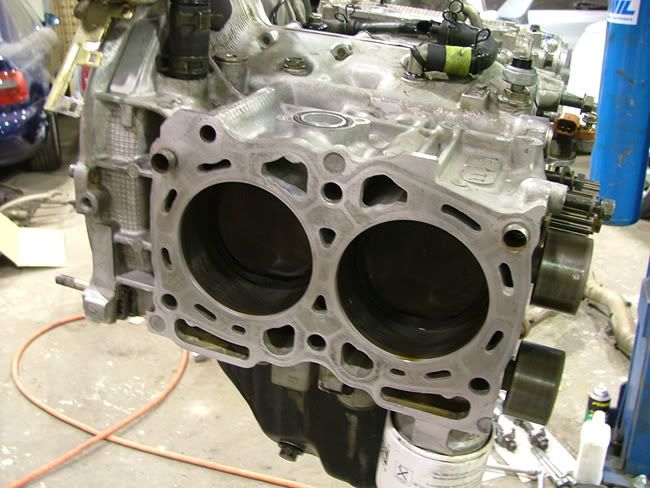Yep, pretty much continuous, the extra outlets on the turbo system are to achieve sufficient flow at lower suction.vrg3 wrote:Hardy - I dunno... I thought the area behind the valve covers is supposed to be pretty much continuous with the area in the crankcase, isn't it? I mean, don't a lot of inline engines have their PCV stuff only on the valve cover, with no fittings on the block?
Wow, what a thread… so much to say and I’m such a slow typer.
To some extent we’re over thinking things, maybe I can help clarify a few points.
The PCV valve (as stated before) is both a check valve and a metering valve, look at the construction detail on the page linked earlier in this thread. It’s fully open under moderate vacuum, but as vacuum increases a pinnel is drawn back into a necked orifice, this controls the volume of air drawn into the intake. Under positive manifold pressure (boost) the PCV is closed.
When the PCV is closed the intake pipe is the suction source.
On the older Subaru engine (EA series) one of the valve covers is the “fresh air intake.” Flow goes into the crankcase through one valve cover and out through the other valve cover (and case vent on the turbo) to the PCV or intake pipe depending on manifold pressure. This appears to be true of the N/A EJ22 (valve covers are intake and case vent is outlet), but it looks like the turbo EJ may use the valve covers as the outlet under low vac/boost (I’d have to get a good look at one to be sure).
The less effective evacuation under high load is typically not an issue on a N/A streetcar that rarely sees extended full throttle operation. But on a turbo car, sustained low vacuum or partial boost is much more likely so the system uses the intake pipe as the suction source often in normal operation. To achieve the same flow with a lower vacuum source the turbo vent system needs to be more open and interconnected.
Catch can location should be between the crankcase outlet(s) and the vacuum source. A single can could be used if both suction sources were routed to the can. The suction line for the intake pipe will be the one with the “venturi” end at the turbo inlet. So for the turbo car it looks like you may have two case outlets and two suction sources to route to the catch can. Or use two cans.
Open/closed deck has no effect on the PCV system.
Gary






